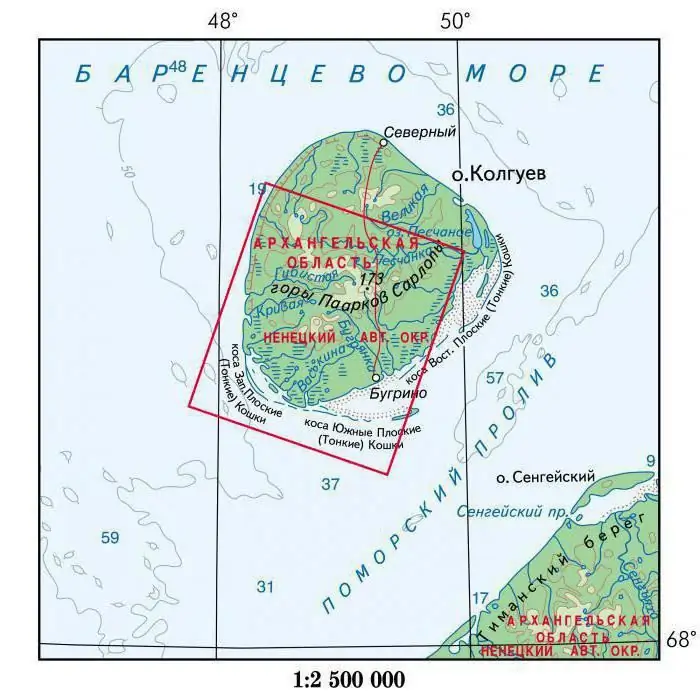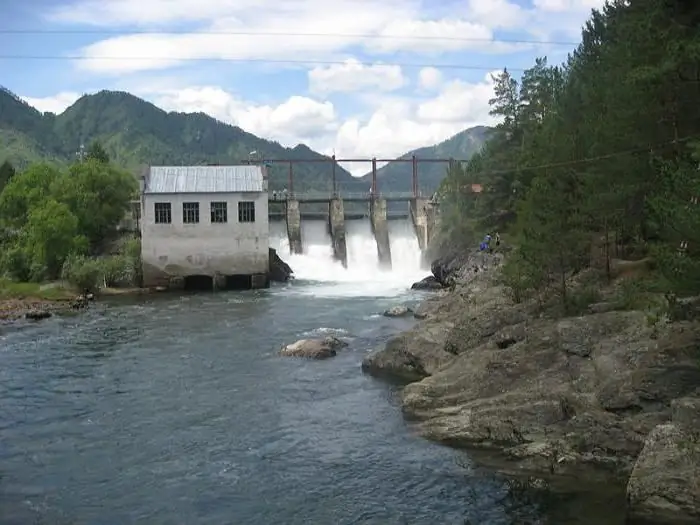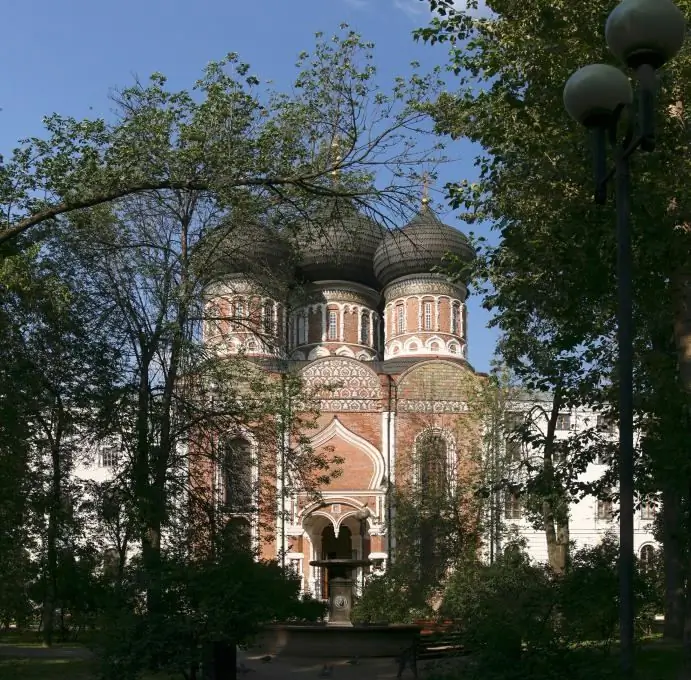- Author Harold Hamphrey [email protected].
- Public 2023-12-17 10:06.
- Last modified 2025-01-24 11:10.
When Peter I studied the banks of the Neva, he was primarily interested in the possibility of Mother Russia's access to the sea, and not the convenience of land for the construction of a future metropolis. The river delta in the place where Petersburg was later founded was a swampy, sparsely populated area with many channels and islands.

St. Petersburg Islands
Therefore, it is no coincidence that today the cultural capital of our country is called the Venice of the North. Most of this amazingly beautiful city is spread over the islands. In total, according to 1864, there were one hundred and one, but as a result of various construction works, thirty-four remained. And this number is constantly changing. Some channels of the Neva fall asleep, so the islands unite, while others appear new ones. Many of them, with their western tip, go directly to the B altic Sea. Therefore, ignorant tourists, walking, may quite unexpectedly find themselves on a sandy beach or on a pier. If you ask the locals to name tenthe most famous land areas, then, most likely, Guguevsky Island will not be included in this list.
General information
150 years after the founding of St. Petersburg, this was a deserted place. And only from the last quarter of the last century, after the construction of the Sea Canal and the transfer of the St. Petersburg Commercial Port here, trade revived on the island. It began to be gradually built up.
To the "New Port" arranged at the entrance to the Neva, in which large ships moored, they laid the Port-Putilovskaya branch of the Nikolaev railway. In the twentieth century, Gutuevsky Island (St. Petersburg) has significantly increased territorially. Today, its area is more than three square meters with a width of four meters. Maly Rezvyi and Gladkiy Islands are also attached to it. Three bridges, including a railway one, connect it to the mainland.

History
Vitsasaari, which means “bush”… That is how the Finns used to call Gutuevsky Island (St. Petersburg). What area it was in the tsarist years, it is impossible to say for sure. When Peter the Great founded the city, the names began to change. Everything depended on the name of the person who bought the particular land plot. During its relatively short history, it has changed many names. Before the founding of St. Petersburg, it was called Vitsasaari (Vitsasaari). On the plan of the city of 1716, it is indicated as Uninhabited, and on the map of 1717, published in France, this place was designated under the name of St. Catherine. Subsequently, it was renamed Round Island (from 1737 to 1793). In parallel, they called Primorsky. The last name was due to the fact that it is located next to the Gulf of Finland. Among others was Novosiltsov, in honor of the rich lieutenant.
The current name has been attached to the island since the middle of the 18th century, when the Olonets merchant-shipbuilder Konon Guttuev (Hugtunen), who arrived in St. Petersburg, having become rich, acquired this island.
There used to be a boundary channel here. He divided Gutuevsky Island into two parts - southern and northern. It was dug in the 19th century to drain the local lands. There was also an embankment, which, however, did not repeat the bend of the boundary, but had a direction directly to the Sea Canal.
Even before the revolution, they began to fill it up. The first part of the canal in the section from the Ekateringofka River to the street. Gapsalskaya was buried, and already in the 50s of the last century, the entire channel was drained and buried.
Construction of a port on Gutuevsky Island
In the 1880s, a lot of construction began here. The result is a port. For him, in 1899-1903, a customs building was also erected. The author of the project was the architect Kurdyumov.

After the construction of the port, life here has changed dramatically. Two bridges were built across Yekateringofka, buyans were created - storage places with a pier. Here fish was stored in barrels. Mostly it was herring. About two hundred katals moved barrels. Retail trade was not conducted here, fish was sold only in bulk. It was thanks to the appearance of the port that Gutuevsky Island in St. Petersburg became known to the townspeople.
How to get there
Photos of the then port buildings can be seen in the city museum. During the war, several shells hit here. As a result, part of the port building was destroyed, but later it was restored. This is clearly visible, since on the completed part the brick is still light in comparison with the rest of the array.
An idle person who comes here to stare at the industrial buildings or wander around will not be able to get into the busy port. Yes, this is not necessary. But outside of it there is a lot of interesting things, and these sights (for example, the Epiphany Church, which we will talk about a little later) can and even need to be seen when you get to Gutuevsky Island in St. Petersburg. How to get to it, you can find out from the old-timers. You can get there along the Rizhsky Prospekt, the end of which is a bridge thrown over Yekateringofka. On the other side, it passes into Gapsalskaya Street, which got its name from the Estonian town of Haapsalu. If you go from Kanonersky Island, then you need to get through the underwater tunnel.

Gutuevsky Island in St. Petersburg is located at the mouth of the Bolshaya Neva. Today it territorially belongs to the Kirov region. You can get to it by bus (numbers 135, 49, 66, 67, 71), as well as by fixed-route taxi going to Gutuevsky Island.
St. Petersburg. Temple: how to get there
At the end of the 19th century, in connection with the appearance of the port, everyone who had at least some relation to his work began to settle here: sailors, customs officers, dockers, officials, artisans, etc. Allthey were believers, and therefore they needed a place where they could pray. Therefore, according to the subscription list, they began to collect money for the church. The most significant amount - one hundred thousand rubles - was given by the manufacturer Voronin, the owner of a weaving factory. He asked for permission to build a family tomb in the church. The temple was erected on Dvinskaya Street near Ekateringofka. It was built by engineer Kosyakov Sr. with the participation of Pravdzik. The Church of the Epiphany was built for eight years: from 1891 to 1899.

Description of the temple
The architect made an attempt to combine Old Russian and Byzantine styles. The Church of the Epiphany is the main object for tourists visiting Gutuevsky Island (St. Petersburg). The temple was closed in 1935, and a soap factory was placed in it. As a result, the interior was completely damaged. Back in the mid-70s of the last century, the facade of the church was a very pitiful sight, depressing the former parishioners with sooty walls and a rusty dome. Later, warehouses of the Frunzensky department store were arranged in it. Everything changed in the 90s of the last century, when the Church of the Epiphany was returned to the Russian Orthodox Church.
There are three altars in the church. One of them is dedicated to the Epiphany, others - to the protector of travelers and sailors Nicholas the Wonderworker and John the Faster. The temple had a unique altar, completely made of snow-white marble. It looked like it was carved from ivory. Only the steps to the altar remain today.
Royal gates were made from majolica. Inside Epiphanythe church was all painted. To date, it has been decided to restore the gates and the altar. It was decided to dedicate the Church of the Epiphany to the miraculous rescue of the Tsarevich: Nikolai, during the journey of the imperial family in a Japanese city, was attacked by a policeman to stab him. In the basement there is still the burial place of the family members of the manufacturer Voronin.
Other significant objects
In addition to the temple, Gutuevsky Island is known for the fact that the B altic Customs, the administrative building of the Seaport of St. Petersburg, the University of Water Communications are located here.
An interesting building on the island is the Sailors' House of Culture. It began to be built in the 30s of the last century, and finished 20 years later. As a result, the building has become an incredible mixture of architectural styles.

On a small square on which Gutuevsky Island is spread, there is a monument dedicated to the sailors and ships of the B altic Shipping Company.
Objects of architecture of past centuries
Those who are interested in the history of architecture will be interested to look at the buildings of the former bone-burning and glue factories. Their ordinary buildings today look almost like knight's castles with battlements, arches, loopholes, bars…
Small and Big Frisky Islands
If you look from the Gutuevsky bridge to the south, then right in the middle of Ekateringofka you can see a very small piece of land. This is Little Frisky Island. To the west was his brother - Big, but today it no longer exists, because as a resultfalling asleep ducts, he disappeared from the maps. Today it is considered part of Gutuevsky Island.

This very unusual name has its own history. Even in the time of Peter the Great, merchants from Ostashkov began to come to St. Petersburg. Here they traded fish. Having become rich very soon, they eventually began to supply their goods to the imperial court. And they began to buy land, including several islands, for the amassed fortune. This is how Big Frisky and Small Frisky appeared. Where do these names come from?
The merchants were known as the Rezvovs, and, apparently, the island is so named by analogy with their "playfulness". Interestingly, the most active of them, Terenty Sergeevich Rezvov, eventually received the title of Hereditary Honorary Citizen of St. Petersburg, and one of his grandsons became a nobleman and changed his last name to Rezvy. Now this island is occupied by military installations, so it is impossible to get to it. It can only be seen from the bridge.






